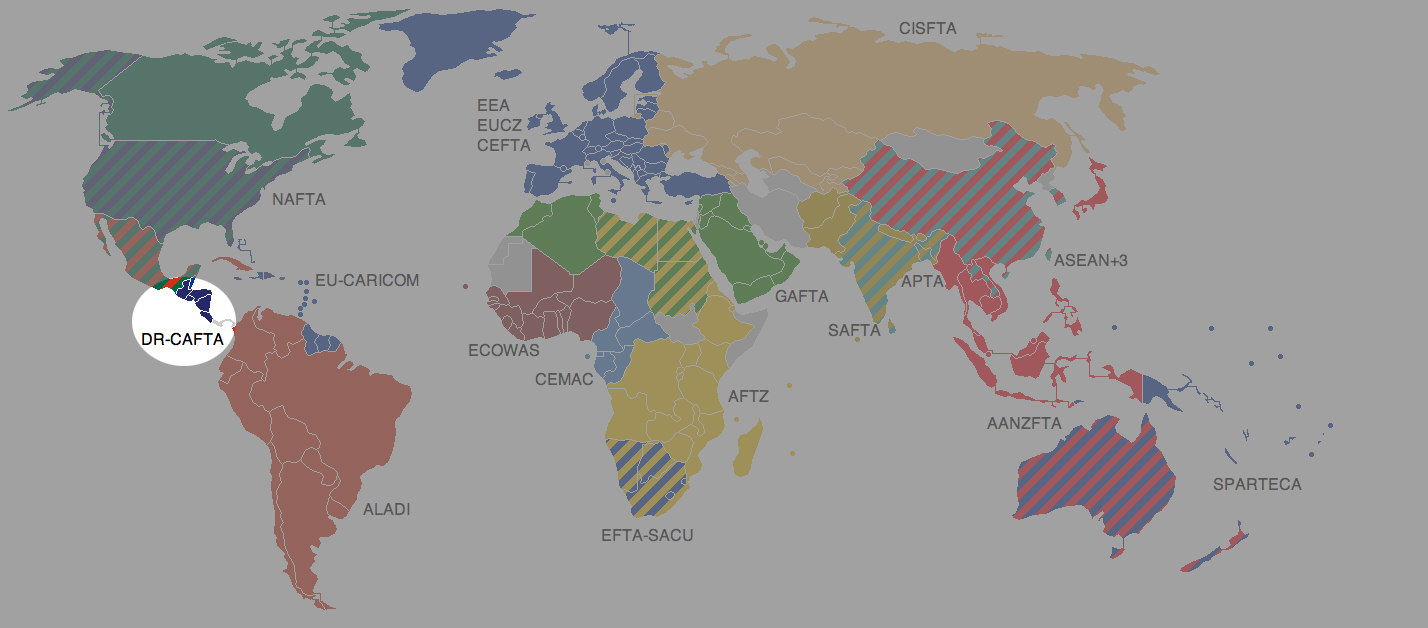
When we think of relations between the
United States and countries in Central America, the association may
spark memory of past US involvement in political unrest (particularly
in Nicaragua and El Salvador). In recent years, however, six nations
that comprise Central America have come to rely upon the US and each
other for economic gain. The Central America Free Trade Agreement, or
CAFTA, has proven advantageous for these countries - where many
inhabitants live below the poverty level - to make trade inroads
with North America.
The Benefits of DR-CAFTA
Following the ratification of the North
American Free Trade Agreement (NAFTA) during the Clinton
Administration, successor George W. Bush sought to expand American
trade relations further along the Western Hemisphere. In 2003, the
Bush Administration negotiated with four current members to form the
agreement, and by the next year DR-CAFTA had been finalized to
allowed free trade within the participating nations:
Costa Rica - A largely
agricultural nation, Costa Rica imports bananas, coffee, sugar and
cocoa.
The Dominican Republic -
Clothing production represents the largest percent of this country's
export income.
El Salvador - Coffee accounts
for nearly a quarter of El Salvador's export revenues, though they
also send paper products and sugar to the US.
Guatemala - Like Costa Rica,
Guatemala exports coffee and bananas, but in recent years has
expanded offerings to textiles and cut flowers.
Honduras - Coffee, fruits and
nuts are among the foodstuffs shipped to the United States and
fellow CAFTA nations
Nicaragua - The largest of the
Central American nations land-wise, Nicaraguan key exports include
coffee and shellfish.
Through this trade agreement, DR-CAFTA
nations enjoy tariff-free trade on the majority of US imports and
exports nearly a third of their product and services into the United
States. The state of Florida, in particular, is important to DR-CAFTA
in that the majority of trade and communication passes through this
area. With a large Spanish-speaking population and airports that
offer direct flights to Central America, Florida assists the DR-CAFTA
in expediting trade. Close to $20 billion in goods from DR-CAFTA
countries ship to the United States, improving overall prosperity.
The Challenges
Despite the economic boost to the
poorer nations of Central America, and the potential for American
companies to establish international branches and plants without
penalization, DR-CAFTA has not operated without its share of
detractors. Concern over restrictions with regards to drug testing
and quality control of certain products have challenged Central
American pharmaceutical companies to produce affordable medicines,
while other critics in the economics field like Joseph Stiglitz have
suggested the agreement will not necessarily lessen poverty since
American imports may threaten the local businesses.
However one views DR-CAFTA, this
agreement may be considered critical to maintaining good relations
throughout the Americas - not just in these six Central American
countries, but beyond. Their accompanying Environmental Cooperation
Program serves to aid Central America in strengthening their
conservation efforts, while US involvement in enforcement of
International Labor standards seeks to improve working conditions in
the country. DR-CAFTA is an important stepping stone towards a more
ambitious Free Trade Area of the Americas - encompassing Chile,
Colombia, and others - which could create profitable trade between
the north and south continents for future generations.